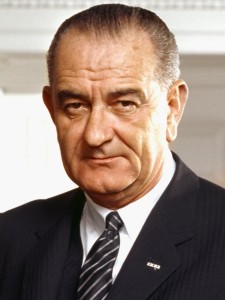
Note: During the summer of 1964 I was 13 years old. As had become our family’s summer custom, in late July of that year mom and dad packed up all six of us kids and off we went on our annual camping trip. Our destination that summer was a place called Cape Lookout on the picturesque Oregon coast. Several days into our stay my dad took off to the nearby town of Tillamook to get some supplies. When he returned he brought back with him a copy of The Oregonian, the local newspaper, and tossed it onto the picnic table along with the packages of potato chips, ketchup and hot dogs. I have never forgotten the huge, bold, black lettered headline on that paper: “US CRUSHES VIET ARMADA”, it said. Though only 13 I had already developed an avid interest in world affairs and particularly in the communist versus America cold war conflict that had been threatening the safety of our country throughout my entire life. Like most Americans at the time, I was staunchly anti-communist, and the United States, to me, could do no wrong. I eagerly read the article beneath the headline, and felt inflated with pride to find out that on the night of August 4th several communist North Vietnamese patrol boats had been destroyed when they dared to fire on two U.S. destroyers in international waters in the Tonkin Gulf off the coast of North Vietnam. The North Vietnamese had gotten what they deserved I thought. After all, in deciding to attack the powerful US Navy what did they expect would happen? President Johnson immediately ordered retaliatory air strikes on North Vietnam and went on TV to announce to the American people that our ships had been subjected to the unprovoked attacks. Feeling assured by the article that my country was, as always, in the right and invincible, I put the paper down and returned to my camping fun. A few days later, before our camping trip was even over, Johnson asked for and received from Congress a nearly unanimous authorization to take whatever military action he deemed necessary to repel any attacks against U.S. armed forces and to prevent further aggression on the part of the North Vietnamese. The congressional authorization was called the “Gulf of Tonkin Resolution”, and though technically not a declaration of war, it might as well have been, for its words gave Johnson all the power he needed to prosecute the Vietnam War. While claiming that he and the United States sought no wider war in Vietnam, within a few months Johnson would launch Operation Rolling Thunder, one of the most intense bombing campaigns in history, against North Vietnam; and would send the first U.S. ground troops to South Vietnam when 3500 Marines came ashore at Da Nang in March of 1965—all on the basis of the Gulf of Tonkin Resolution. Based on what the President had told us and Congress about what happened in the Gulf of Tonkin on that August night, most Americans supported Johnson and the actions he was taking against North Vietnam. At the time it occurred to very few of us that the President might be lying to us. What follows is the real story of the Gulf of Tonkin, and it is something every American should know. Please read on…MA
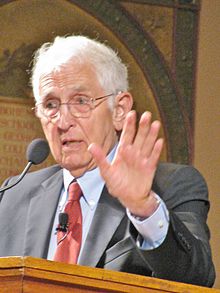
On the morning of Tuesday, August 4th, 1964 the new special assistant to Assistant Secretary of Defense John McNaughton was settling in to his new office in the Pentagon. The new special assistant was named Daniel Ellsberg[1] and that particular Tuesday was his first full day on the job. Ellsberg had barely started his new duties when an out of breath courier—he had been running—arrived with an urgent cable for his boss, Assistant Secretary McNaughton, who at the moment was down the hall in a meeting with Secretary of Defense Robert McNamara. Upon reading the message Ellsberg understood at once why the courier had been running. The cable was from Captain John J. Herrick, the commander of a two destroyer flotilla operating on the other side of the planet, in the Gulf of Tonkin, 60 miles off the coast of North Vietnam in the South China Sea. In the cable Captain Herrick reported that both destroyers under his command, the USS Turner Joy and the USS Maddox, were under attack by North Vietnamese patrol boats. Torpedoes had been fired at both ships, Herrick said, though neither vessel had been hit. Ten minutes later the out of breath courier was back with another cable from Captain Herrick, this time reporting that the destroyers were “under continuous torpedo attack” from the North Vietnamese patrol boats.
Though new on post, it was not lost on Ellsberg how important Herrick’s cables were. The attacks they were reporting represented only the 2nd time since World War II that U.S. naval vessels had been fired on in anger. The first had occurred just a couple days earlier, on August 2nd, when three North Vietnamese patrol boats in broad daylight launched a torpedo attack on the Maddox. In that action all of the torpedoes missed and the Maddox, while suffering no damage herself, had driven off the patrol boats, damaging all three with fire from her guns. In response to the attacks, since the Maddox had not been damaged, President Johnson decided against further military reprisals, but directed that the Turner Joy be sent to accompany the Maddox on her mission. The President further directed that, should the North Vietnamese vessels attack again, they be destroyed. He also sent a formal protest to Hanoi, warning that “any further unprovoked offensive military action against United States forces” would “inevitably” result in “grave consequences.”
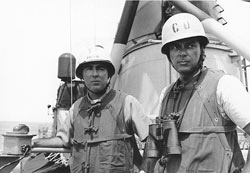
According to Johnson’s orders these new attacks by the North Vietnamese patrol boats should have immediately resulted in their destruction. Indeed, new messages arriving from Captain Herrick indicated exactly that had occurred. The cables, which had been sent “Flash”[2] priority by Herrick, arrived to Ellsberg’s desk about one every ten minutes for an astounding two hours. They told the story of an attack by the North Vietnamese patrol boats on the U.S. destroyers that commenced at 9:42 pm (10:42 AM in Washington DC) in the Tonkin Gulf and ended just before midnight. It being dark with rough weather in the South China Sea, there was no visual contact between the North Vietnamese boats and the destroyers. Herrick, therefore, was relying on the sonar of the Maddox to verify that torpedoes had been fired on his ships; and the radar of the Turner Joy to direct his return fire and to verify damage to the enemy. Based on these he reported that 26 torpedoes had been fired on his vessels during the action, all of which he had successfully evaded, and that one of the North Vietnamese boats had been destroyed and several others damaged.
Ellsberg was doing his best to read and organize Herrick’s messages for his boss when the cables abruptly stopped coming. Over an hour went by, and then a new cable arrived that threw into question everything that had been reported earlier that morning: “Review of action makes many reported contacts and torpedoes fired appear doubtful,” Herrick reported. “Freak weather effects on radar and overeager sonarmen may have accounted for many reports. No actual visual sightings by Maddox. Suggest complete evaluation before any further action taken.” Half an hour later another message arrived from Herrick: “Entire action leaves many doubts except for apparent attempted ambush at beginning. Suggest thorough reconnaissance in daylight by aircraft.”
Reading these latest messages from Captain Herrick, Ellsberg was astonished. For two hours he had been receiving multiple cables from a U.S. Navy captain indicating a significant firefight was taking place in the Gulf of Tonkin, only to be followed an hour later by messages indicating that maybe nothing had happened. How could that be? To warrant all of those reports there must have been some kind of attack—that is how it seemed to Ellsberg and the other defense department people in his office; but based on Herrick’s latest communications there were significant doubts. Those doubts were reinforced later that afternoon when Herrick sent two more messages: “Details of action present a confusing picture although certain that original ambush was bona fide,” said the first, while the second was even more uncertain, stating that, “the first boat to close the Maddox probably fired a torpedo at the Maddox which was heard but not seen. All subsequent Maddox torpedo reports are doubtful in that it is suspected that sonarman was hearing ship’s own propeller beat.”
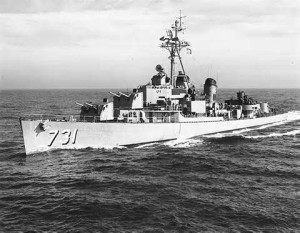
At that exact moment, regardless of the doubt about the attacks, President Johnson was proceeding as if they were a complete certainty. Plans for retaliatory air strikes against North Vietnam were already moving forward and he had briefed the National Security Council [3]on these plans as well as key congressional leaders, at the same time asking them for the resolution authorizing him to use whatever force against North Vietnam he felt necessary. In addition he requested air time on the three major networks for the evening of 4 August, initially at 7 PM Eastern time, to brief the American people on the supposed attacks on the U.S. ships and to announce the retaliatory air strikes. (The president did not want the American people to find out about the North Vietnamese attacks and retaliatory strikes the next morning in the media, preferring instead to control the information and the message by announcing them first himself.) Concerned that the announcement of the planned air strikes before they actually occurred would alert the North Vietnamese defenses, the Navy wanted to delay the broadcast until its planes had left their carriers. Consequently Johnson ended up making his announcement at 11:37 pm eastern time (8:37 pm on the west coast). In the broadcast the President stated positively and unequivocally that North Vietnamese patrol boats had made an unprovoked attack on the U.S. destroyers earlier that day—the 2nd such attack in the past two days. A short while later, in a press conference that took place shortly after midnight, Secretary of Defense Robert McNamara re-iterated everything the President had said, leaving no doubt in the mind of anyone watching that the attacks had taken place.

Though on the job less than one full day, Daniel Ellsberg was in the unique position of knowing that both Johnson and McNamara were lying when they reported that the 4 August attacks on the destroyers had definitely occurred. A few days later he became privy to information that indicated that the lying was much more extensive. Both Johnson and McNamara in their announcements had stated that the Maddox and the Turner Joy were “on routine patrol in international waters” at the time of the attacks. In reality, Ellsberg discovered, both destroyers were on a secret type of intelligence mission code-named as “Desoto Patrols” [4], the purpose of which was twofold: first, to demonstrate to the North Vietnamese that the U.S. regarded as invalid their claim to a 12 mile territorial waters[5] limit from their coastline and islands by having its destroyers penetrate inside the 12 mile limit, and, second, the destroyers’ penetration inside the 12 mile limit would result in the North Vietnamese activation of their coastal defense radars and systems which would allow the U.S. ships to plot North Vietnamese defenses in preparation for future air and sea attacks. Prior to the initial August 2nd attack on the Maddox the U.S. destroyer had penetrated to within 8 miles of the North Vietnamese coast line and to within 4 miles of their coastal islands. The North Vietnamese patrol boats were launched in response to this penetration of their claimed territorial waters, whereupon the Maddox withdrew to 28 miles off the North Vietnamese coast, which is where it was when the patrol boats caught up and attacked. All of this information was withheld from both Congress and the American people in the press conferences, speeches and briefings from President Johnson, Defense Secretary McNamara and other military and government officials prior to the passing of the Gulf of Tonkin Resolution.
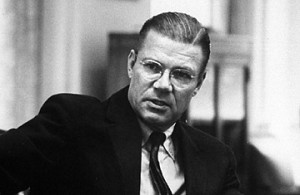
To justify the U.S. retaliatory response on North Vietnam, as well as the need for the congressional resolution authorizing the President to use whatever force he deemed necessary to meet the communist threat in Vietnam, it was important that the American people and Congress believe that the North Vietnamese attacks were unprovoked. Both Johnson and McNamara went out of their way to characterize them as such. In light of the above information that the Maddox was actually carrying out a “Desoto Patrol” it can be seen that the “unprovoked” claim was patently untrue. But the truth, Ellsberg discovered, was actually worse than that. Three days before the August 2nd attack on the Maddox, on the night of July 30-31, the North Vietnamese coastal islands of Hon Me and Hon Nieu were shelled by patrol boats that Hanoi claimed were part of U.S. “puppet” forces operating in the area. The U.S. State Department issued public statements denying any knowledge of the attacks on the islands. In his press conferences of August 4th and 5th McNamara also denied having knowledge of the attacks, and in their top secret testimony to congressional committees at the time both McNamara and Secretary of State Dean Rusk, while acknowledging that the attacks on the islands occurred, stated that they could not be considered provocations as they were entirely South Vietnamese operations; that there was little knowledge of them in Washington; that they had no connection with the U.S. destroyer patrols; and that the commander of the destroyer patrols had no knowledge of them whatsoever.
All of these statements were false. The truth was that the operations resulting in the attacks on the North Vietnamese islands were entirely U.S. operations, code-named as “Operation Plan (Oplan) 34 Alpha.” [6] The attacks were carried out by extremely fast patrol boats known as “Nastys” [7] which the CIA had purchased from Norway; and the CIA, with Navy help, trained the crews, which were composed of Vietnamese and other CIA assets and mercenaries. Oplan 34A was coordinated with the Desoto destroyer patrols for two purposes: first, to gain knowledge of the North Vietnamese coastal defenses as already stated above; and second, to provide support to the Nasty patrol boats should they need it. Captain Herrick specifically knew of the attacks on the islands because after the North Vietnamese torpedo attack on the Maddox on August 2nd he requested that his patrol be curtailed as he expected more retaliatory attacks on his vessels due to the shelling of the North Vietnamese islands. (Herrick’s request was denied.) Oplan 34A was jointly run by the CIA and the U.S. Military Assistance Command Vietnam (MACV) in coordination with the U.S. Navy, and the planning was carried out at the highest levels in the U.S. military (Joint Chiefs of Staff). The schedules of the individual operations were all known about and approved by Department of Defense and National Security Council (NSC) officials in the U.S. government. By August of 1964 the Oplan 34A patrol boat attacks on the North Vietnamese coast, which started in February, had been going on for 6 months. It was even acknowledged at an NSC meeting on August 4th, the day of the supposed 2nd attack on the Maddox, by CIA Director John McCone that, “The North Vietnamese are reacting defensively to our attack on their off shore islands. They are responding out of pride and on the basis of defense considerations.” President Johnson was at that NSC meeting and heard McCone’s words. He was well aware of the Oplan 34 A attacks on North Vietnamese islands as he had approved the plan himself back in February, before the operation was launched.
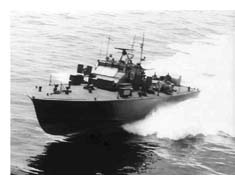
Based on all this, it is obvious that even the August 2nd attack by the North Vietnamese patrol boats on the Maddox, an attack which definitely did take place, was provoked by the shelling of the North Vietnamese coastal islands in a raid that was just the latest in a series of raids that had been going on for 6 months. That these raids on the North Vietnamese coastal areas had been planned, authorized and carried out by the United States was completely withheld from Congress and the American people, along with the doubtful nature of the August 4th attack on the Maddox. As a result, on August 7, 1964, both the House, by a vote of 416-0, and the Senate, by a vote of 98-2, passed the Gulf of Tonkin Resolution, which authorized President Johnson to use whatever conventional military force he deemed necessary in Southeast Asia to defend U.S. forces there and to halt North Vietnamese aggression.
On August 10, 1964 President Johnson signed the Gulf of Tonkin Resolution into law.
In that Resolution lay the Vietnam War.
Copyright © 2015
By Mark Arnold
All Rights Reserved
[1] Daniel Ellsberg is a former US Military and Defense Department analyst who is best known for leaking what is now known as “The Pentagon Papers” (a top secret Dept of Defense study of the history of US involvement and decision making with regard to Vietnam) to the New York Times in 1971. Earlier in his career Ellsberg had been in the Marine Corp and attained the rank of 1st Lieutenant. He graduated from Harvard with a degree in Economics in 1952 and attained his PHD in Economics from Harvard in 1962. After his work in the Pentagon in 1964 he spent two years in Vietnam witnessing the situation there first hand and then returned to the United States and worked as an analyst for the Rand Corporation on top secret Defense Dept projects. It was in that capacity that he contributed to the compilation and study of classified documents on the US conduct of the Vietnam War that had been ordered by Defense Secretary Robert McNamara (The Pentagon Papers). As can be seen from the information in this article, and as he saw from his study of other top secret documents, Ellsberg was aware of the lying and misrepresentation by US Presidents and government officials to Congress and the American people and this directly led to his decision to leak the Pentagon Papers.
[2] “Flash” priority meant that the message so designated was given highest priority handling, retransmission and distribution, superseding other messages, at each terminal on the route from the source of the message to its ultimate destination.
[3] The National Security Council (NSC) is the principal body used by the President of the United States for a peaceful consideration of national security and foreign policy matters with his senior national security advisors and Cabinet officials and is part of the Executive Office of the President of the United States. Since its inception as a result of the National Security Act (1947) under President Harry Truman the function of the Council has been to advise and assist the president on national security and foreign policies. The Council also serves as the president’s principal arm for coordinating these policies among various government agencies. The National Security Council is chaired by the President and its required members by law are the Vice President, the Secretary of State, the Secretary of Defense, the National Security Advisor, and the Secretary of Treasury. The Chairman of the Joint Chiefs of Staff is the military advisor to the Council, the Director of National Intelligence is the intelligence advisor, and the Director of National Drug Control Policy is the drug control policy advisor. The Chief of Staff to the President, Counsel to the President, and the Assistant to the President for Economic Policy are also regularly invited to attend NSC meetings. The Attorney General, the Director of the Office of Management and Budget and The Director of the Central Intelligence Agency are invited to attend meetings pertaining to their responsibilities. The heads of other executive departments and agencies, as well as other senior officials, are invited to attend meetings of the NSC when appropriate.
[4] The term “Desoto Patrols” is derived from the first of this type of patrol carried out by the U.S. Navy, which took place off the coast of China in April, 1962. The first ship used was the destroyer USS DeHaven and the first patrol was just off the Chinese coast close to the Chinese “Tsingtao” naval base, hence “Desoto” stands for “DeHaven Special Operations off Tsingtao”. In response to the Chinese announcement that they were now claiming a 12 mile territorial limit off their coast, the USS DeHaven carried out a mission in which it purposely would violate the 12 mile limit to demonstrate that the U.S. did not acknowledge it and to assert the U.S. right to navigate in what had been, before the Chinese claim, international waters. The DeHaven was equipped with special communications monitoring equipment so as to be able to intercept Chinese messages in response to its violation of the claimed Chinese territorial limit, thus allowing the US to get more accurate assessments of Chinese defensive capabilities.
[5] Territorial waters, or a territorial sea, as defined by the 1982 United Nations Convention on the Law of the Sea, is a belt of coastal waters extending at most 12 nautical miles (22.2 km; 13.8 mi) from the baseline (usually the mean low-water mark) of a coastal state. The territorial sea is regarded as the sovereign territory of the state, although foreign ships (both military and civilian) at times are allowed innocent passage through it; this sovereignty also extends to the airspace over and seabed below. Adjustment of these boundaries is called, in international law, maritime delimitation. Though the 12 mile territorial waters limit is almost universally accepted today, that has not always been the case. For many nations, until the mid 20th century, the limit was 3 miles. (which was based on the distance of a cannon shot, thus determining the distance from shore out to sea that a nation could reasonably claim sovereignty) In the ‘60s, when communist nations such as China and North Vietnam sought to claim the 12 mile limit, the U.S. expressed its right to navigate in what had priorly been international waters in the fashion described in this article.
[6] “Operation Plan 34 Alpha” (Oplan 34 A) was developed by Marine Corp General Victor Krulak in his capacity as Special Assistant for Counter Insurgency Activities for the Joint Chiefs of Staff. He presented it to President Johnson for approval in January of 1964 and the first of its operations commenced in February, 1964. According to Krulak the Oplan 34 A raids were to be “destructive undertakings” designed to “result in substantial destruction, economic loss and harassment.” They were to be carried out against “targets identified with North Vietnam’s economic and industrial well-being.” Before 1964 the CIA was running an earlier program of similar raids which Krulak’s program upgraded.
[7] In the late 1950s the US Navy was looking to replace its aging WWII torpedo boats. The top choice was the 80-foot Nasty-class patrol boat used with considerable success by the Norwegian Navy since 1957. Built in Norway, the boat had two British-built supercharged diesel engines delivering 3,100 shaft horsepower and could reach speeds of 44 knots fully loaded and speeds of over 50 knots after burning off some fuel. The cruising range could extend to about 1,000 miles at a speed of 20 knots. The Navy (CIA) ordered 16 Nasty-class boats and classified them as Patrol Torpedo, Fast, or PTF. To fill in the demand before the Nastys arrived, Navy planners found two old WWII vintage PT boats. These boats were powered by Packard engines running on gasoline, but proved unreliable in this mission due to engine problems and noise. In fact, the engines were difficult to start at times and this proved to be a serious weakness when inserted into North Viet-Nam waters and being surprised by a Russian-made patrol boat. By the end of 1965, when enough Nastys became available, the gasoline boats were replaced and used for target practice. The firepower of the Nasty was significant, consisting of a 40mm gun on the aft deck and two 20mm guns, one on the port and one on the starboard side. An 81mm mortar with a 50-caliber machine gun mounted piggyback was placed forward of the bridge. On some missions, the crews carried a 57mm recoilless rifle for additional firepower.


3 Responses
It’s nice to know the truth about historical incidents. Thanks for presenting the truth in such a clear interesting way! This is especially important to me as I was in the US Navy during the Vietnam War.
Tony Berka
Thanks Tony! I agree with your comment about knowing the truth regarding historical incidents. The lessons of the Gulf of Tonkin and Vietnam have vast applicability today, which is why I write. Having been in the Navy yourself during the Vietnam era I can see why it would mean more to you. I think that you would find Daniel Ellsberg’s book, “Secrets” interesting. Much of the info for this article is drawn from it and it gives a first hand account of Ellsberg’s experiences with regard to the Tonkin incident and of course the whole Pentagon Papers leak. Worth reading. L, Mark